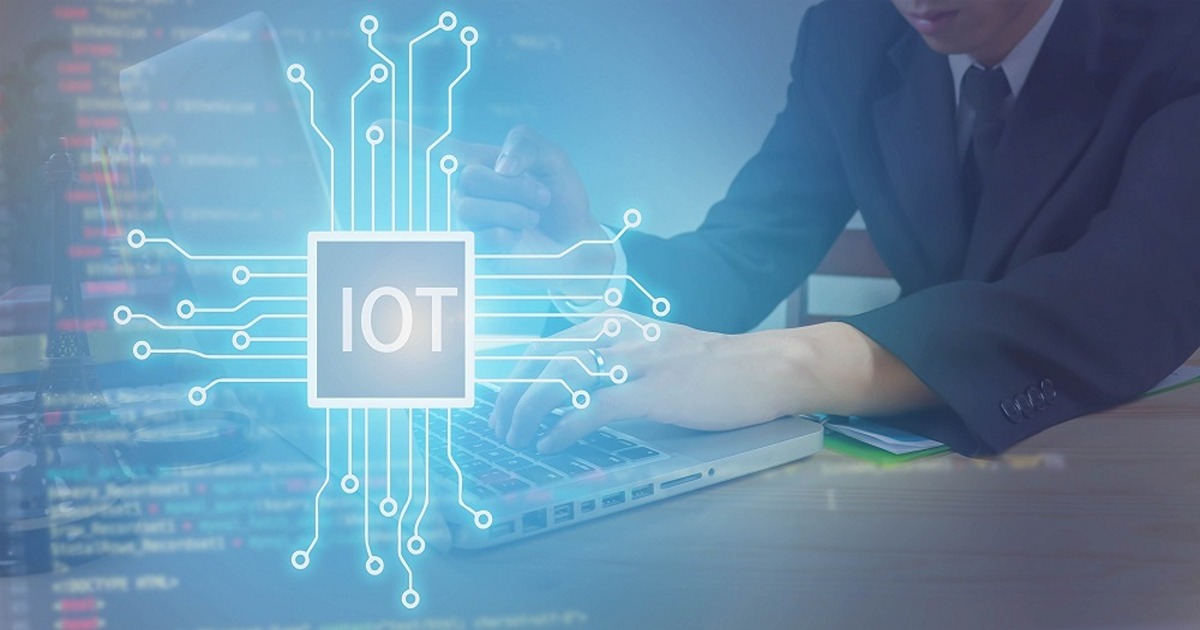
Enterprise Iot
Article | July 20, 2023
The Internet of Things (IoT) and Industrial Internet of Things (IIoT) markets have experienced explosive growth as a result of the digital industrial revolution that followed the COVID-19 epidemic. To fully benefit, however, organizations have had to handle security concerns associated with these revolutionary technologies. Therefore, finding the correct security strategy is crucial for any organization because of the increasing dependency on IoT and IIoT to manage essential business systems.
IoT and IIoT can be implemented quickly, but they come with inherent vulnerabilities. This risks businesses from cyberthreats such as device theft, spoofing, denial of service attacks, and data breaches or siphoning. Attacks of this nature adversely affect an organization's operations, finances, safety, and reputation.
Many IoT and IIoT devices have passwords hard-coded into their firmware, making it challenging to patch or update security, which is a significant problem. Even when security is deployed on a device, it can usually be bypassed by taking advantage of a variety of known weaknesses. As a result, IT teams may find it challenging to identify an occurrence when IoT or IIoT devices are compromised before affecting systems and data.
Mitigating IoT and IIoT Security Risks
Separate IIoT and wireless devices from the SCADA or ICS network. Micro-segmentation allows only authorized device connectivity in certain circumstances.
Control network access by monitoring what connects and validating each device's security.
Demand visibility across all enterprise security networks and devices. This should be centralized so all devices, networks, risks, traffic, and policies can be handled in real-time across production and IT environments.
Use an intrusion protection system (IPS) to identify threats and patch IoT and IIoT devices virtually. Counter unexpected attacks with active protection and deception techniques.
It's crucial to check that security solutions can grow automatically to meet business requirements before using them. This entails responding to network changes, foreseeing risks and controlling them proactively, and offering real-time threat intelligence.
Read More

IoT Security
Article | October 11, 2023
Explore the events on IoT security, addressing to the complex cyber security challenges and privacy issues. It caters to a variety of attendees including industrialists, students and enthusiasts.
The significance of IoT security cannot be overstated in today's interconnected business landscape. Safeguarding sensitive data and mitigating risks is paramount, making robust IoT security a non-negotiable imperative for organizations seeking to thrive in the digital age.
From industry professionals seeking to expand their knowledge to builders and buyers in the market, these events provide a comprehensive platform to learn, connect, and discover the possibilities of scaling with IoT. Attendees can connect with buyers, sellers, and innovators, fostering meaningful connections and exploring potential business opportunities. At these industrial IoT conferences 2023 and beyond, attendees can immerse themselves in a vibrant atmosphere of innovation and collaboration.
1. IoT Tech Expo
September 26-27, 2023 | RAI (AMSTERDAM)
The IoT Tech Expo Europe is a prominent event that serves as a platform for exploring the latest innovations, solutions, and strategies in the field of IoT, digital twins, enterprise transformation, IoT security, and edge platforms. It promises two days of top-level content and thought leadership discussions. Industry experts, including keynote speakers and panelists, will share their unparalleled industry knowledge, real-life experiences, and insights through solo presentations, expert panel discussions, and in-depth fireside chats. Some of the key sessions will include panel discussions on staying on track with digital twins, examining their pitfalls across industries, and exploring the incorporation of other technologies like AI, ML, and Blockchain for agile processes. Notable speakers in this domain include Bruno Ávila, i-Team Director - Digital Urban Planning Lab, City of Amsterdam; Ben Lomax Thorpe, Head of Digital Twin, among others. Additionally, the event showcases success stories and case studies from organizations leading the way in digitalization and IoT implementation.
2. International Conference on the Internet of Things
November 7-10, 2023 | Nagoya (Japan)
This event brings together leading researchers, industry experts, and stakeholders in the IoT field. This conference serves as a platform for visionary and groundbreaking research, fostering innovation in various IoT verticals such as smart industry, smart cities, smart health, and smart environment. The 13th International Conference on the Internet of Things (IoT 2023) will include keynote speeches, research presentations, panel discussions, and interactive sessions. It will provide a platform for sharing visionary ideas, ground-breaking research findings, and innovative solutions in the realm of IoT and related fields. Nagoya, the host city for IoT 2023, will offer a captivating setting for the conference. With a focus on visionary research and innovation, the conference provides a platform for knowledge sharing, collaboration, and exploration of IoT advancements in various verticals.
3. 9th Annual IoT Security Foundation Conference
November 7, 2023 | IET (London)
The 9th Annual IoT Security Foundation Conference is a highly regarded event dedicated to IoT cybersecurity. With the increasing prominence of artificial intelligence in various industries, this year's conference will focus on the impact of AI on cybersecurity, exploring its implications for developers and cyber defenders at the forefront of the field. The call for presentations is currently open, inviting submissions on a wide range of IoT security-related themes till July 14th, 2023, with notifications of acceptance to be sent by August 18th, 2023. By participating in the IoTSF 2023 Conference, sponsors and exhibitors gain exposure within the IoT security community and can forge new customer relationships, generate leads, establish partnerships, and strengthen existing customer connections. The conference will cover a range of themes, including business, technical, operational, educational, and policy-related topics. Proposals are invited on these subjects, offering speakers an opportunity to contribute to the diverse interests of conference attendees.
4. ETSI IoT Conference 2023 (ETSI IoT Week 2023)
July 4-6, 2023 | Sophia Antipolis (France)
ETSI, the European Telecommunications Standards Institute, is organizing its annual flagship event, the ETSI IoT Conference. The conference, ' IoT Technologies for Green and Digital Transformation,' is a must-attend event for professionals involved in the Internet of Things, recognizing the significance of standard-enabled technologies for IoT service deployments. It provides a valuable platform for attendees to learn and share experiences related to IoT technologies, services, activities, and requirements, focusing on current and future standardization efforts. The 2023 edition of the conference will feature a combination of keynote speeches, presentations, interactive panels, and IoT demonstrations, creating ample networking opportunities for participants. The event will revolve around three main areas: IoT for the digital and green transformation, IoT technologies, and horizontal IoT standards for various vertical business sectors. The ETSI IoT Conference is particularly relevant for organizations and stakeholders interested in the service and operational aspects of IoT, including industry representatives, SMEs, research and development institutions, academia, decision and policy makers, as well as users of IoT standards such as cities, governments, and societal actors.
5. 4th International Conference on Big Data, Machine Learning and IoT (BMLI 2023)
August 26-27, 2023 | Dubai (UAE)
The 4th International Conference on Big Data, Machine Learning, and IoT serves as a major platform for presenting innovative ideas, developments, research projects, and approaches in the domains of big data, machine learning, and the internet of things. This event includes but is not limited to big data techniques, models, and algorithms; infrastructure and platforms for big data; search and mining in big data; security, privacy, and trust in big data. Authors are invited to submit original papers by July 01, 2023, through the conference's submission system. Additionally, selected outstanding papers will have the opportunity to be considered for publication in renowned journals such as the International Journal of Database Management Systems (IJDMS), the International Journal of Data Mining & Knowledge Management Process (IJDKP), and others. The event will provide an excellent opportunity for researchers, industry professionals, and practitioners to explore the latest advancements, share knowledge, and foster collaborations in the dynamic fields of big data, machine learning, and IoT.
6. 28th Australasian Conference on Information Security and Privacy (ACISP 2023)
July 5-7, 2023 | Brisbane (Australia)
The 28th Australasian Conference on Information Security and Privacy (ACISP 2023) is an event in the field of cybersecurity and privacy, bringing together researchers, practitioners, and industry experts from Australasia and around the world. This conference will serve as a platform to exchange innovative ideas, research findings, and advancements in information security and privacy. ACISP 2023 focuses on addressing the evolving challenges and emerging trends in the field, providing a forum for discussing theoretical and practical aspects of IoT security risks. Participants have the opportunity to present their research papers, engage in enlightening discussions, and network with professionals in the industry. The conference covers a wide range of topics related to information security and privacy, including cryptographic protocols and algorithms, security in emerging technologies, intrusion detection and prevention.
7. The Things Conference
September 21-22, 2023 | Amsterdam (Netherlands)
The Things Conference is dedicated to LoRaWAN, attracting thousands of professionals and enthusiasts worldwide. This highly anticipated gathering will serve as a hub for the entire LoRaWAN ecosystem, offering a unique opportunity to meet key players, gain valuable insights into the IoT industry, and explore the expanding LPWAN market. The event showcases a diverse range of LoRaWAN enabled security IoT devices and gateways at the Wall of Fame, where participants can interact with and experience first-hand the latest products from over 100 partners. The conference program features an impressive line-up of speakers from prominent companies such as Blues, Miromico, ELSYS, TagoIO, Edge Impulse, and more. Attendees can benefit from engaging keynotes, insightful workshops, interactive side sessions, case studies, and value-driven stories. These sessions cover various aspects of LoRaWAN, offering attendees valuable knowledge and practical guidance. One of the highlights of The Things Conference is The Things Certifications, which allow participants to showcase their expertise.
Final Thoughts
The conferences help industry experts, IT professionals, engineers, and decision-makers to gain insights and in-depth knowledge. Attendees can expect a comprehensive program consisting of keynote presentations, panel discussions, case studies, and interactive workshops. The above events will cover various topics, concerning the IoT security. Participating in these will provide networking opportunities, allowing attendees to connect with peers, share experiences, and establish valuable business connections. Leaders can stay updated with the evolving data center landscape and gain a competitive edge in their evolving technologies, to provide protection against threats.
Read More

Security, IoT Security
Article | July 13, 2023
Building resilient IoT networks: Exploring the top technologies for enhancing IoT security and protecting as well as safeguarding against evolving cyber threats in the interconnected era of Industry 4.0.
Contents
1. What is Network Resilience and Why is it Needed?
1.1 Continuous Operation
1.2 Mitigating Security Threats
1.3 Data Protection
1.4 System Availability
1.5 Risk Management
1.6 Regulatory Compliance
2. Factors to Consider for Network Resilience
3. Top Trends in IoT Security
3.1 Zero Trust and AI
3.2 Supply Chain Security
3.3 Network Segmentation and Segregation
3.4 Over-the-Air (OTA) Updates
3.5 Device Authentication and Authorization
3.6 Software-defined Networking (SDN) Security
3.7 Identity and Access Management (IAM)
4. Conclusion
1. What is Network Resilience and Why is it Needed?
Network resilience refers to the ability of an IoT network to withstand and recover from disruptions, attacks, or failures while maintaining its essential functions. It involves implementing measures to ensure the network remains available, reliable, and secure, even during security threats or unexpected events.
Ensuring network resilience is a critical aspect of IoT network security. Network resilience refers to the ability of an IoT network to withstand and recover from disruptions, attacks, or failures while maintaining its essential functions. Ensuring network resilience in IoT network security is crucial for the following reasons:
1.1 Continuous Operation
IoT networks often support critical applications and services that require uninterrupted operation. Network resilience ensures that these applications can continue functioning even during disruptions, such as network failures or security incidents. It minimizes downtime and ensures business continuity.
1.2 Mitigating Security Threats
IoT networks are susceptible to various cybersecurity threats, including malware, unauthorized access, or Distributed Denial of Service (DDoS) attacks. Network resilience measures help mitigate these threats by implementing security controls, monitoring network traffic, and enabling prompt detection and response to security incidents.
1.3 Data Protection
IoT devices generate and transmit vast amounts of sensitive data. Network resilience safeguards data integrity, confidentiality, and availability by implementing secure communication protocols, encryption mechanisms, and access controls. It ensures that data remains protected even during network disruptions or security breaches.
1.4 System Availability
IoT systems often rely on real-time data processing and communication. Network resilience ensures that data flows seamlessly, allowing IoT devices to exchange information and execute tasks without interruptions. It supports critical functions such as monitoring, control, and decision-making processes.
1.5 Risk Management
Building network resilience helps organizations effectively manage risks associated with IoT deployments. By identifying vulnerabilities, implementing protective measures, and having response plans in place, organizations can minimize the impact of security incidents, reduce financial losses, and maintain the trust of stakeholders.
1.6 Regulatory Compliance
Many industries have specific regulations and standards governing the security and resilience of IoT networks. By ensuring network resilience, organizations can demonstrate compliance with these requirements, avoiding penalties, legal issues, and reputational damage.
2. Factors to Consider for Network Resilience
Implementing redundancy and failover mechanisms within the network infrastructure helps mitigate the impact of single points of failure. This involves deploying backup systems, redundant network paths, and failover mechanisms to ensure continuous operation despite a failure or attack. Traffic Monitoring and Anomaly Detection for Continuous network traffic monitoring helps identify abnormal patterns or behaviours that may indicate security threats or attacks. By leveraging intrusion detection and prevention systems (IDPS) and traffic analysis tools, organizations can promptly detect and respond to network anomalies, safeguarding network resilience. Moreover, segmentation and Isolation: Dividing the IoT network into segments or zones and isolating critical devices or systems from less secure ones enhances network resilience. Implementing proper network segmentation, VLANs (Virtual Local Area Networks), or software-defined networking (SDN) enables effective control, containment, and mitigation of security incidents.
DDoS attacks significantly threaten network resilience by overwhelming the network's resources and causing service disruption. Deploying robust DDoS protection measures, such as traffic filtering, rate limiting, and traffic diversion, helps mitigate the impact of such attacks and ensures network availability. Incident Response and Establishing comprehensive incident response and recovery plans specific to IoT network security incidents is crucial. These plans should outline clear procedures, roles, and responsibilities to efficiently respond to and recover from security breaches or disruptions, minimizing downtime and maintaining network resilience. In addition, regular penetration testing, vulnerability assessments, and network audits help identify weaknesses and vulnerabilities in the IoT network infrastructure. Promptly addressing these issues through patches, updates, and security configuration adjustments strengthens network resilience by proactively addressing potential security risks.
By implementing these measures, organizations can enhance the resilience of their IoT networks, ensuring continuous operation, prompt threat detection, and effective response to security incidents. Network resilience plays a vital role in maintaining IoT systems' integrity, availability, and reliability in the face of evolving security challenges.
3. Top Trends in IoT Security
3.1 Zero Trust and AI
Zero Trust is an emerging security concept that assumes no implicit trust towards devices or users, even if they are already inside the network perimeter. Implementing Zero Trust principles in IoT networks can help mitigate the risks associated with compromised devices and unauthorized access for IoT security. In order to bolster cybersecurity measures, adopting a zero trust approach. Effectively addressing cybersecurity challenges entails not merely technological solutions but a comprehensive organizational strategy rooted in cultural and policy frameworks. Emphasizing the zero trust concept underscores the importance of policy implementation throughout the entire organization, complementing technological measures.
3.2 Supply Chain Security
The complex and interconnected nature of IoT supply chains introduces security risks. The supply chain for IoT devices involves multiple stages, including device manufacturing, software development, distribution, and deployment. Each stage presents potential security risks that can compromise the integrity and security of the IoT network. This includes adopting secure supply chain management practices, such as verifying the security practices of suppliers and manufacturers, and establishing clear security requirements and standards for the entire supply chain. Conducting third-party risk assessments helps evaluate the security posture of suppliers and vendors to identify any potential vulnerabilities or weaknesses.
3.3 Network Segmentation and Segregation
In IoT security, minimizing the potential impact of a compromised IoT device is crucial, and network segmentation and segregation play a vital role in achieving this goal. Network segmentation involves dividing the network into separate zones or segments, based on factors such as device type, functionality, or security requirements. The containment strategy helps minimize the impact of a security breach by isolating compromised devices and preventing lateral movement within the network.
3.4 Over-the-Air (OTA) Updates
Software updates play a critical role in maintaining the integrity and security of IoT devices. IoT devices frequently require updates to address software bugs, patch vulnerabilities, or introduce new features. Over-the-Air (OTA) update mechanisms are being enhanced with robust security measures to ensure the secure delivery and installation of updates. Code signing is a prevalent practice where updates are digitally signed with cryptographic keys to verify the authenticity and integrity of the software. Secure boot is another important mechanism that establishes a chain of trust during the device boot-up process, ensuring that only authorized and tamper-free software is loaded onto the device.
3.5 Device Authentication and Authorization
The increasing number of IoT devices poses a significant challenge in ensuring secure and trusted authentication and authorization. Two-factor authentication (2FA), for example, adds an extra layer of protection by requiring users or devices to provide two separate forms of authentication, such as a password and a unique code sent to a mobile device. Digital certificates, on the other hand, enable secure and trusted device authentication by leveraging public key infrastructure (PKI) technology. Each IoT device is issued a unique digital certificate, which serves as a digital identity, allowing for secure communication and verification of device authenticity.
3.6 Software-defined Networking (SDN) Security
Securing Software-defined Networking (SDN) environments is paramount to protect IoT deployments. SDN offers centralized control and management of network resources, providing flexibility and scalability. This ensures that only authorized entities can access and make changes to the SDN infrastructure, preventing unauthorized access and configuration changes. Additionally, continuous traffic monitoring and analysis enable the detection of suspicious activities and potential security breaches. Encryption IoT standards and protocols should be employed to secure communication between the SDN controller, switches, and IoT devices, safeguarding data privacy and integrity. Network segmentation within the SDN environment helps limit the impact of security breaches, reducing the attack surface.
3.7 Identity and Access Management (IAM)
Implementing IAM solutions, such as role-based access control (RBAC) and multi-factor authentication (MFA), within IoT networks significantly enhances network security. IAM ensures that only authorized individuals can access and interact with IoT devices and systems. RBAC enables administrators to assign specific access privileges based on user roles and responsibilities, reducing the risk of unauthorized access. Additionally, incorporating MFA adds an extra layer of security by requiring users to provide multiple forms of authentication, such as a password and a unique token or biometric verification. This significantly reduces the risk of unauthorized access even if a user's credentials are compromised.
4. Conclusion
The technologies discussed in this article play a crucial role in enhancing IoT network security and resilience. By leveraging these technologies, organizations can mitigate the risks associated with IoT deployments, protect against cyber threats, and ensure the reliability and continuity of their IoT networks. As the IoT landscape evolves, staying up-to-date with these top technologies will be essential for organizations to maintain a robust and secure IoT infrastructure.
The transformative landscape of Industry 4.0 demands strong network security in IoT environments. The top technologies discussed in this article empower organizations to enhance network resilience, protect against cyber threats, and ensure the uninterrupted functioning of IoT networks. Embracing these technologies and staying ahead of emerging threats, helps organizations build a secure foundation for their IoT deployments and capitalize on the vast opportunities offered by the IoT ecosystem.
Read More

Enterprise Iot
Article | July 19, 2022
The concept of "never trust, always verify" is the foundation of the relatively new security architecture known as "zero trust." Zero trust requires that all users and devices be verified every time they connect, even from inside the "moat," in contrast to the conventional castle-and-moat security architecture, which automatically trusts users and devices located within a network's perimeter.
Companies are being forced to reconsider how they safeguard their networks by the internet of things (IoT). Unmanaged smart gadgets connected to the internet expand the number of potential access points for hackers to compromise your security when they are added to a network.
Zero Trust Security Expansion for IoT
After establishing it for users and their devices, organizations must extend zero-trust security to cover unmanaged, non-user devices too. To do this, they require zero trust identity management technologies that automatically register devices, issue credentials, and offer password-less authentication.
Device Visibility
A device may be infected with malware or have a security breach if performance problems or bugs start to appear frequently. In addition, a malfunctioning device may be more vulnerable to attack. Therefore, organizations require device health monitoring that can automatically identify problems and flag them for remedy in order to establish and maintain zero trust security for IoT. Some cutting-edge solutions can also automatically prevent an impacted device from making further connection attempts or carrying out corrective actions without requiring human participation.
The Principle of Least Privilege (PoLP)
The principle of least privilege (PoLP), which argues that any user or device should only obtain the bare minimum access privileges necessary to perform their job functions, is widely used in conjunction with zero trust security. Therefore, organizations must establish the minimal level of network access required for each device to carry out its functions before limiting its potential privileges in order to deploy PoLP for IoT. Implementing identity and access management (IAM) tools and guidelines that support zero trust and PoLP for devices is one approach to accomplishing this.
Security Monitoring
There are other zero-trust security monitoring programs created especially for IoT, such as Palo Alto Networks' IoT Security, which was previously discussed. Businesses can also utilize tools to monitor devices and network traffic, such as next-generation firewalls and intrusion detection and prevention systems (IDS/IPS). The zero trust security solution for IoT must include monitoring in addition to as much automation as possible so that threats can be identified, contained, and remedied even when no one is there to press a button or disconnect a device manually.
One of the leading causes of zero trust security projects failing over time is that people stop adhering to them once they get complicated. This is especially true for IoT security that operates on zero trust. In addition, it can be logistically challenging to keep remote, unmanaged devices at zero trust.
Read More